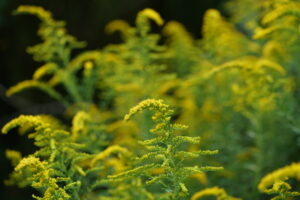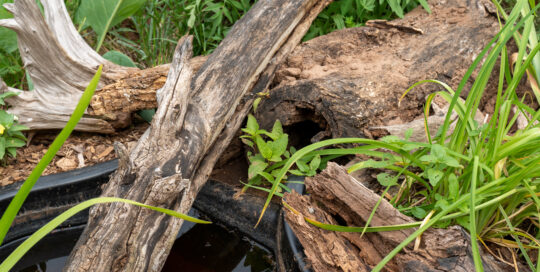Do I need to stratify my seeds before planting?
Views: 409

Spring is almost here, and if you’re like me, you’re anxious to get out in your gardens to get to work! I used to spread seeds in fall, but my success rate was very poor. I have so many birds, I think most of my seeds get eaten. This year, I decided to wait until spring, but it occurred to me: do I need to stratify my seeds before planting? So, what is stratification? And what seeds might need to be stratified?
Stratification
Seed stratification is a process that involves subjecting seeds to cold and moist conditions in order to break their dormancy and encourage germination. This improves the chances of success when growing certain plants. (Of course, if you don’t stratify seeds this year and sow them anyway, they may come up next year, if they don’t feed your wildlife along the way.)
Seed stratification basically simulates the natural conditions that a seed would experience if it were to fall to the ground and overwinter. Many plants have evolved to require this cold exposure to break dormancy and trigger germination. By mimicking this process, gardeners can help to ensure that their seeds will germinate and grow into healthy plants.
The specific requirements for seed stratification will vary depending on the species of plant. Some may require a certain length of time, while others may need multiple cycles of alternating cold and warm temperatures.
The Stratification Process
In general, the process of seed stratification involves placing the seeds in a moist medium, such as peat moss, vermiculite, or sand, and then subjecting them to a period of cold temperatures. This can be done in your freezer/refrigerator. Temperatures needed are typically between 32 and 41 degrees Fahrenheit. After their cold treatment, the seeds are allowed to warm up before being planted. The warming period is typically for a period of a few days to a few weeks.
Seed stratification can be a useful technique for improving the success of growing certain plant species, especially those that are difficult to germinate or have low rates of germination. By following the specific requirements for seed stratification for each plant species, gardeners can help to ensure that their seeds will germinate and grow into healthy plants.
What Seeds Need to Be Stratified?
Here are a few seeds commonly planted in wildlife gardens that rely on stratification:
Wild bergamot (Monarda fistulosa): The seeds of this plant require cold stratification for 30-60 days before planting. Wild bergamot attracts bees, butterflies, and hummingbirds with its fragrant blooms.
Butterfly weed (Asclepias tuberosa) and other milkweeds: The seeds of this milkweed plant require cold stratification for 30-60 days before planting. Butterfly weed is a host plant for monarch butterflies and provides nectar for other pollinators.
Prairie blazing star (Liatris pycnostachya): The seeds of this native prairie plant require cold stratification for 30-60 days before planting. Prairie blazing star attracts bees, butterflies, and other pollinators with its showy purple blooms.
Black-eyed Susan (Rudbeckia hirta): The seeds of this wildflower require cold stratification for 30-60 days before planting. Black-eyed Susan provides nectar and pollen for bees, butterflies, and other pollinators.
Coneflowers (Echinacea spp.): Purple coneflower (Echinacea purpurea) and other coneflower species require stratification for improved germination. Coneflowers attract a variety of butterflies and other pollinators with their bright, showy blooms.
Goldenrod (Solidago spp.): Goldenrod is an important late-season nectar source for many species of butterflies and other pollinators. Some goldenrod species, such as Canada goldenrod (Solidago canadensis), require stratification for germination.
Where do I go for more information?
A good resource for native plants seeds, including information on stratification, is the Lady Bird Johnson Wildflower Center. Search for the plant you’re interested in, then scroll down to the propagation section.
Meet Leslie Miller
Leslie Ann Miller shares 3.5 acres in rural Oklahoma with birds, butterflies and wide variety of animals. She is currently transforming her yard with plantings…
Leslie's Recent Posts

Creating microclimates and microhabitats to benefit wildlife






